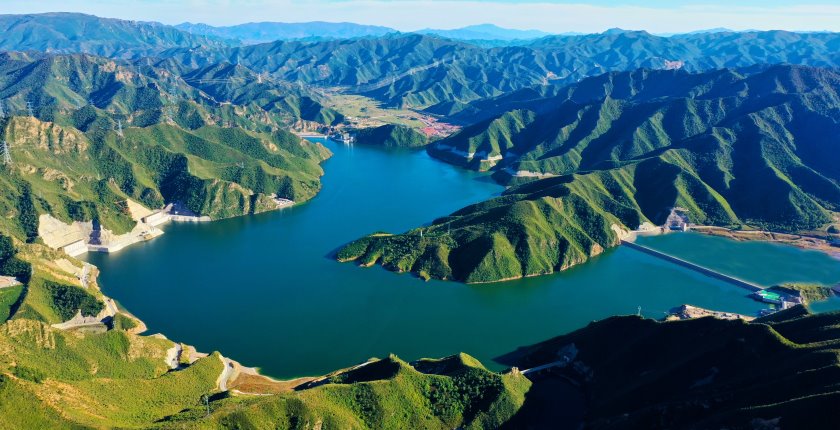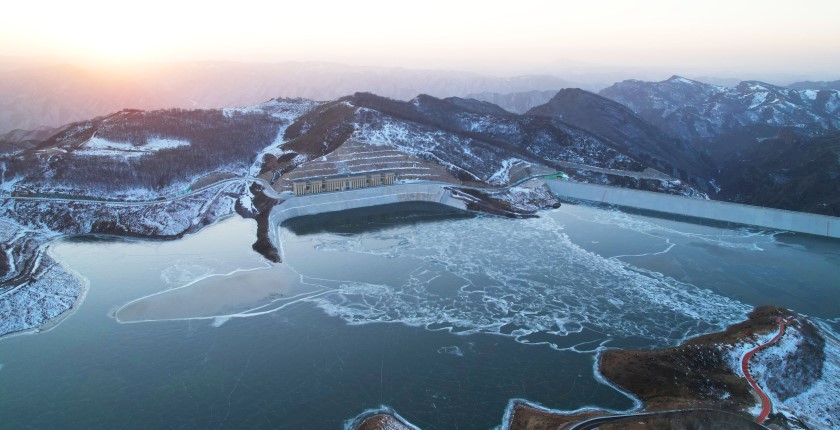
Photo: SGCC
The first two out of 12 reversible turbine units were commissioned in the Fengning pumped storage hydropower plant in Hebei province north of Beijing. The facility operated by State Grid Corp. of China or SGCC is set to become the largest of its kind when it is finished, at 3.6 GW.
The China Gezhouba Group started building the Fengning pumped storage hydropower plant for State Grid Corp. of China in 2014. The investment is estimated at up to more than USD 3 billion. The project consists of two equal phases built simultaneously with a total of 12 reversible pump turbine units of 300 MW each in installed capacity.
The technology enables the sets to both pump water to the upper reservoir or generate electricity, depending on the need. The pump mode is usually on during the night, when power is cheaper, and when there is excess production from renewable sources. At times when demand is rising, pumped storage plants release the water from above and generate electricity.
The new facility will have a major role in the integration of renewable sources
Fengning will supply the grid in Beijing, Tianjin and the northern part of Hebei and balance output from wind and solar power plants in its area and the neighboring Inner Mongolia province. At full capacity, the 3.6 GW system will be able to store as much as 40 GWh, making it a major factor in the integration of renewable sources.

State-owned SGCC, China’s dominant grid operator and power producer, said Fengning would have the largest installed capacity among the facilities of its kind and the largest storage capacity. It added the pumped storage plant would also have the world’s largest underground powerhouse.
Fengning is set to surpass Bath County pumped storage station in Virginia in the United States by capacity
With just above 3 GW in generation capacity, the Bath County pumped storage station in Virginia in the United States is still the largest on the planet.
China aims to boost its pumped storage capacity to 62 GW by 2025 and 120 GW by the end of the decade. It had 30.3 GW in such facilities at the end of 2020, excluding mixed plants, according to the International Renewable Energy Agency (IRENA).


















Be the first one to comment on this article.